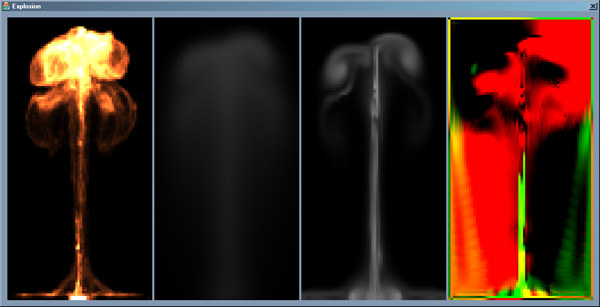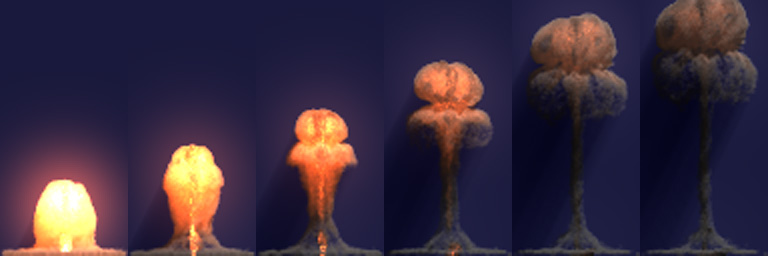

I was always fascinated by the visual beauty and mind-blowing force of large-scale explosions. And since nobody should get hurt, the computer was once again the weapon of choice.
In the upper image you can see the simulation view showing flow dynamics and the lower image shows a sequence of final renderings.
The simulation is done using grid-based Navier-Stokes fluid dynamics and additional Kolmogorov-turbulence to compute the dynamics of airflow.
Now plenty of particles can advect along this flow and are rendered each frame with a custom volume renderer.
« Interactive MandelBulb computation and raytracing with CUDA 2D N-Body simulation (3 million particles) – structure of the universe »
